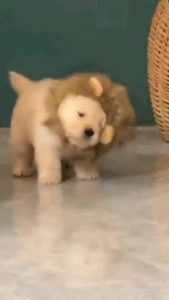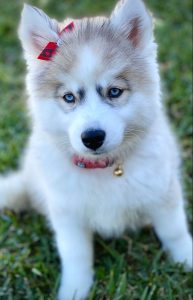Post-surgery care for dogs is crucial for ensuring a smooth and swift recovery. Whether it’s a routine spay/neuter or a more complex procedure, proper care at home can significantly impact your dog’s healing process. Here’s a comprehensive guide to help you provide the best post-surgery care for your dog.
1. Understanding Post-Surgery Needs
– Why Post-Surgery Care is Important:
- After surgery, dogs need extra care to prevent complications, manage pain, and promote healing. Proper care can prevent infections, reduce discomfort, and ensure a faster recovery.
– Common Post-Surgery Behaviors:
- Dogs may exhibit lethargy, loss of appetite, and limited mobility. These behaviors are normal, but monitoring is essential to ensure they don’t persist or worsen.
2. Preparing for Your Dog’s Return Home
– Comfortable Resting Area:
- Create a quiet, comfortable space for your dog to rest. Use soft bedding and ensure the area is free from hazards.
– Limit Physical Activity:
- Restrict your dog’s movement to prevent injury to the surgical site. Use baby gates or keep them in a small room or crate if necessary.
– Essential Supplies:
- Have supplies ready, including medications, an Elizabethan collar (E-collar), and clean towels. Follow your vet’s instructions on wound care and medication administration.
3. Managing Pain and Discomfort
– Pain Medications:
- Administer prescribed pain medications as directed by your vet. Never give human pain relievers to dogs, as they can be toxic.
– Monitoring Pain Levels:
- Watch for signs of pain such as whining, restlessness, or reluctance to move. Contact your vet if you notice persistent or severe pain.
4. Feeding and Hydration
– Appetite and Diet:
- Your dog’s appetite may decrease after surgery. Offer small, frequent meals of their regular food or a bland diet as recommended by your vet.
– Hydration:
- Ensure your dog has access to fresh water at all times. Dehydration can delay recovery and cause additional health issues.
5. Wound Care and Monitoring
– Inspecting the Surgical Site:
- Check the incision site daily for signs of infection, such as redness, swelling, or discharge. Keep the area clean and dry.
– Preventing Licking and Biting:
- Use an E-collar to prevent your dog from licking or biting the wound. Licking can introduce bacteria and cause infections or reopen the incision.
6. Activity Restrictions and Gradual Exercise
– Rest and Recovery:
- Limit your dog’s physical activity for the first few days. Short, supervised walks are fine, but avoid running, jumping, and rough play.
– Gradual Increase in Activity:
- Gradually reintroduce normal activities based on your vet’s advice. Full recovery times vary depending on the type of surgery.
7. Follow-Up Veterinary Visits
– Scheduled Check-Ups:
- Attend all follow-up appointments to ensure your dog is healing properly. Your vet will check the incision site and overall health, adjusting care as needed.
– Addressing Concerns:
- Contact your vet if you notice any concerning symptoms, such as persistent vomiting, diarrhea, changes in behavior, or signs of infection.
8. Managing Medications
– Administering Medications:
- Follow your vet’s instructions for administering antibiotics or other prescribed medications. Use treats or pill pockets to make it easier if needed.
– Monitoring Side Effects:
- Watch for side effects of medications, such as gastrointestinal upset or allergic reactions. Report any adverse effects to your vet immediately.
9. Emotional Support and Comfort
– Providing Comfort:
- Offer plenty of affection and comfort to your dog. Your presence can help reduce their anxiety and promote healing.
– Minimizing Stress:
- Keep the environment calm and quiet. Avoid loud noises and disruptions that could stress your dog.
10. Long-Term Recovery and Care
– Nutritional Support:
- Maintain a balanced diet to support your dog’s recovery. Consult your vet about any dietary adjustments or supplements.
– Monitoring Progress:
- Keep track of your dog’s recovery progress. Note any changes in behavior, appetite, or activity levels and report them to your vet.
Conclusion
Post-surgery care for dogs requires attention to detail, patience, and consistent monitoring. By following your vet’s instructions and providing a comfortable, stress-free environment, you can help your dog recover smoothly and quickly. Remember, your dog relies on you for their care and well-being, so stay vigilant and proactive in their recovery process.
FAQs
1. How long does it take for a dog to recover from surgery?
- Recovery time varies depending on the type of surgery and the individual dog. Most dogs begin to feel better within a few days, but full recovery can take several weeks.
2. What should I do if my dog won’t eat after surgery?
- Offer small, bland meals and ensure they are hydrated. If your dog refuses to eat for more than 24 hours, contact your vet.
3. How can I keep my dog from licking the surgical site?
- Use an E-collar or a recovery suit to prevent licking. These tools are effective in keeping your dog from irritating the incision.
4. Is it normal for my dog to sleep a lot after surgery?
- Yes, increased sleep is normal as your dog’s body is healing. Ensure they have a comfortable place to rest and monitor their recovery.
5. When should I contact the vet about my dog’s incision?
- Contact your vet if you notice redness, swelling, discharge, or if the incision appears to be opening. Also, report any signs of pain or unusual behavior.


